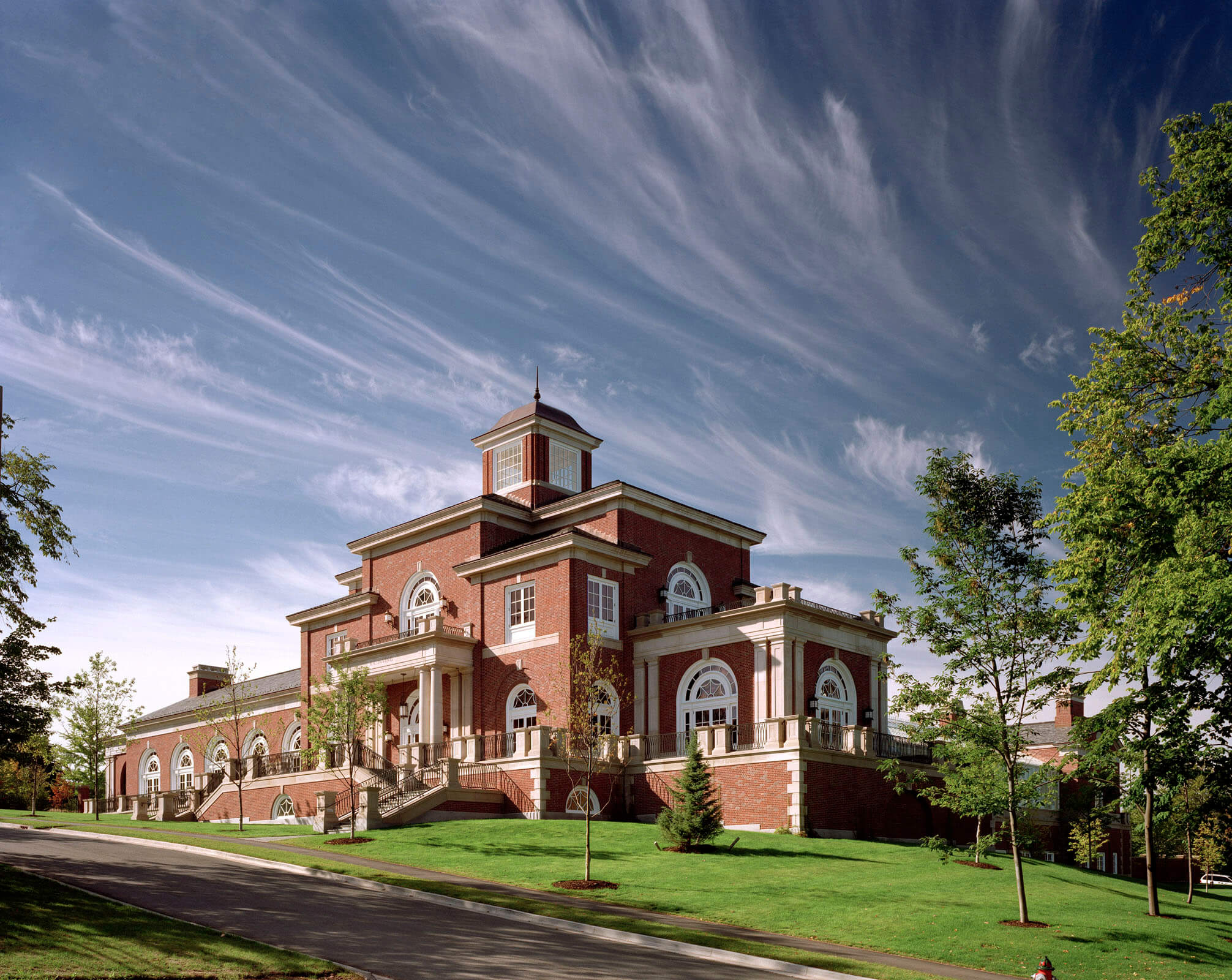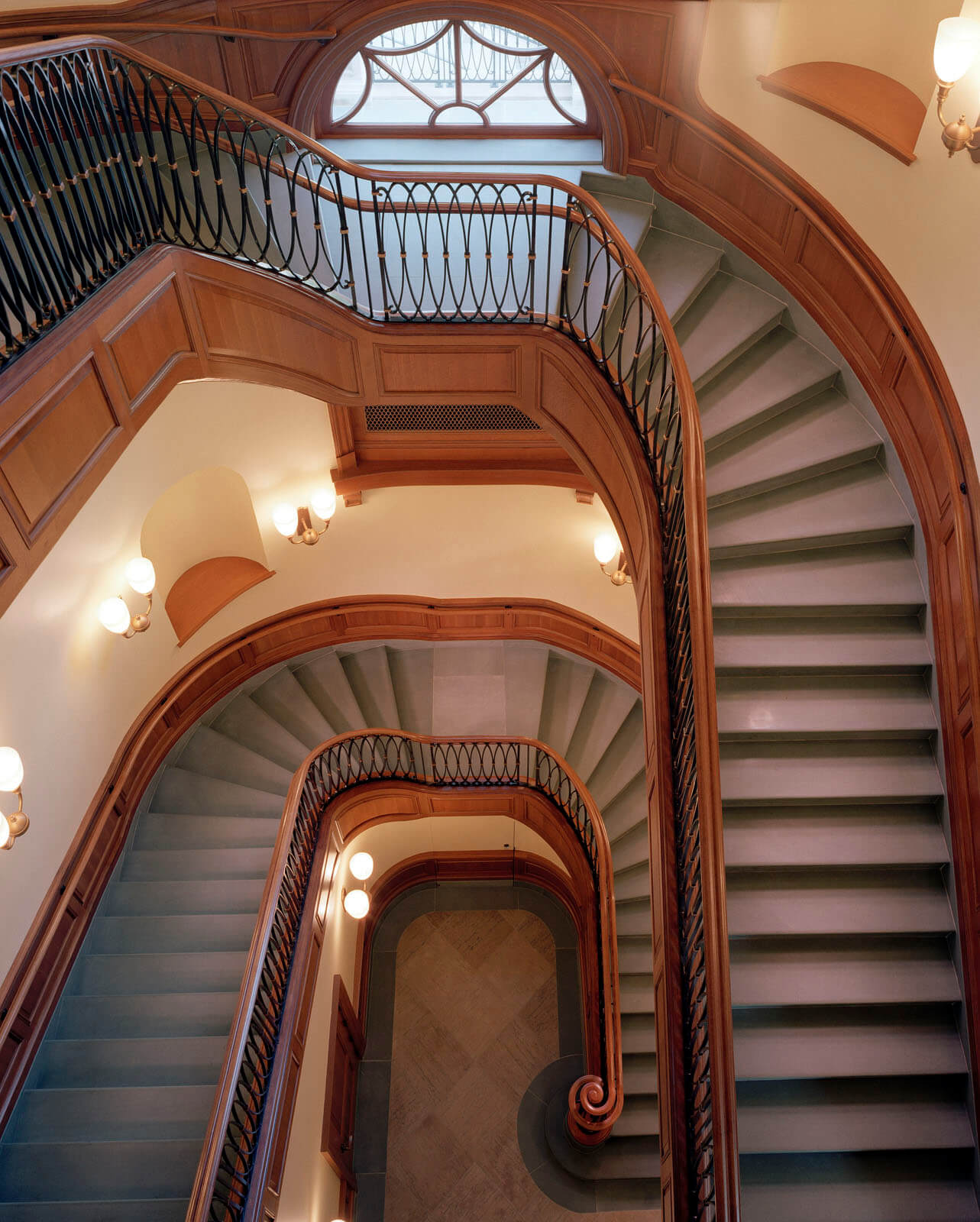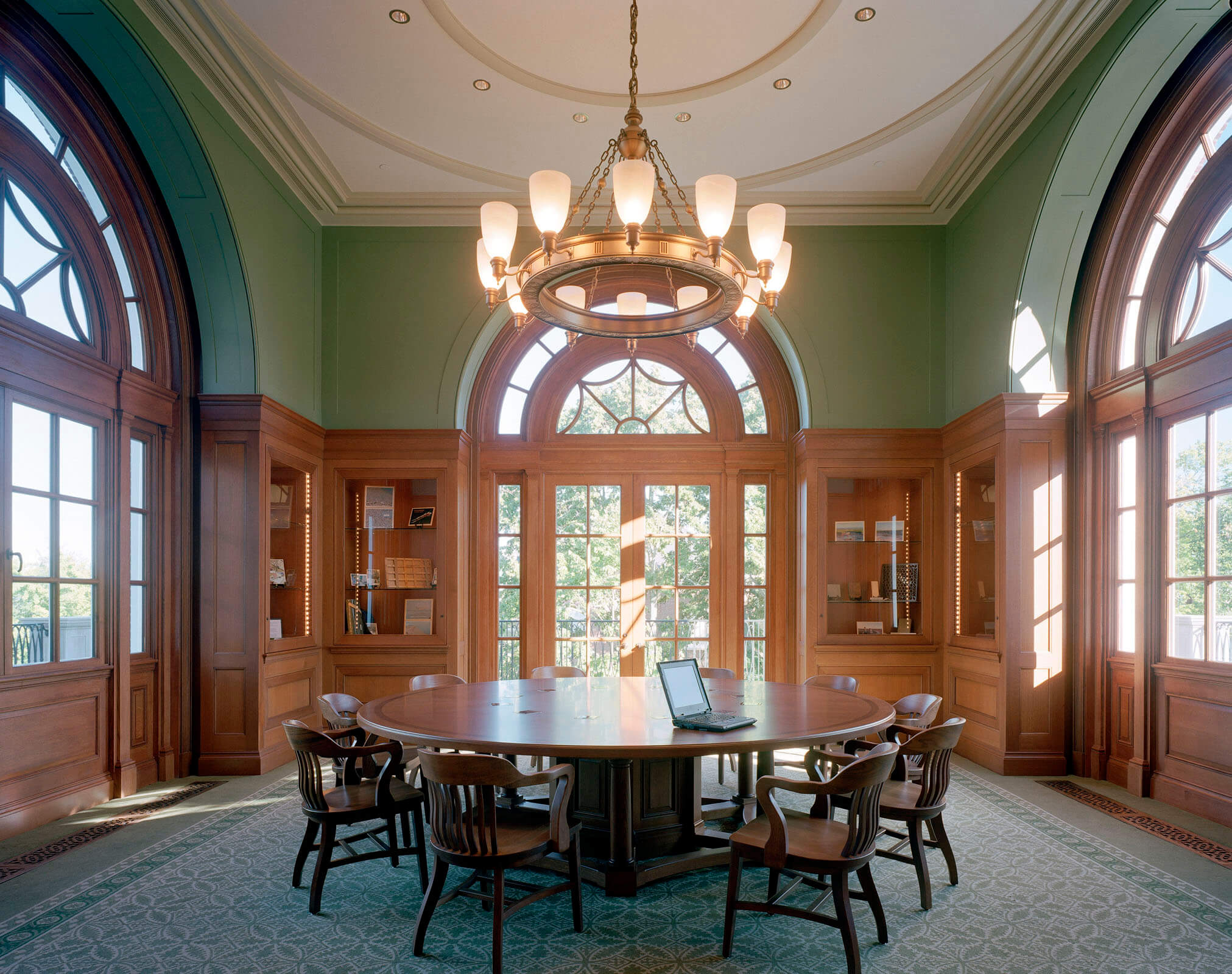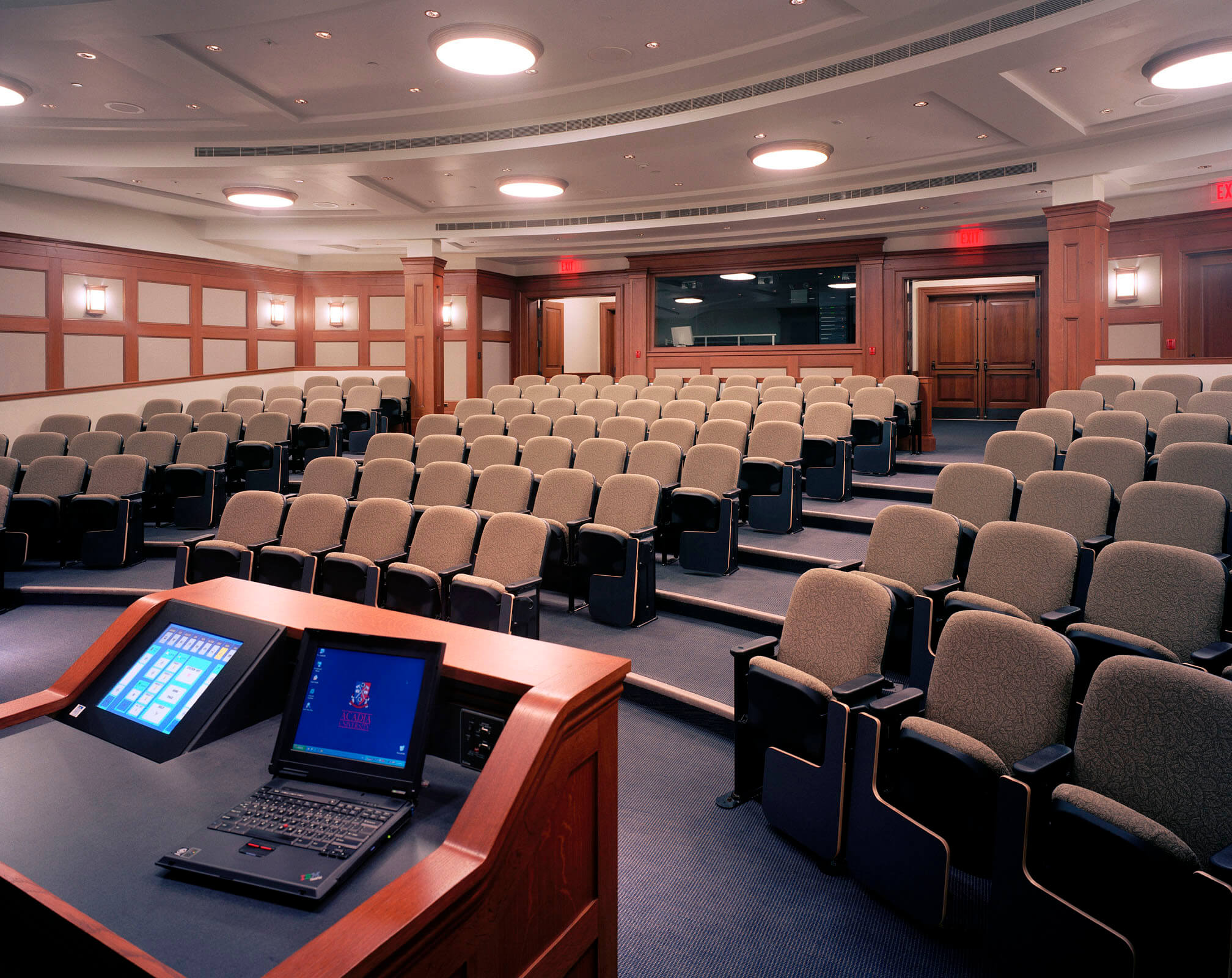
Irving Environmental Science Centre
Acadia University’s 65,000 square foot K.C. Irving Environmental Science Centre combines facilities for scientific research and instruction with meeting and gathering spaces to serve the entire University in order to bring all members of the University community into contact with the natural sciences. In its architectural expression, the Environmental Science Centre looks to the restrained Georgian Classicism of the University's older buildings, with red brick, granite water table, limestone trim, and slate roof. The building's state-of-the-art greenhouse draws its form from the rich history of glass houses and conservatories. To the south the Centre opens to a walled garden, graduation lawn, and research garden that are part of the new Harriet Irving Botanical Gardens dedicated to the study of the native flora of the Acadia region, while to the north it is connected by tunnel to the existing Patterson Hall (1927), which houses the departments of Biology and Environmental Sciences. The three-storey Centre terminates visual and pedestrian axes which focus on the campus's historic University Hall and the Students' Centre.
Immediately adjacent to the Centre's lobby, a wintergarden for major receptions and other ceremonial gatherings opens to the walled garden. The building's lower level contains a 130-seat high technology auditorium with adjacent breakout rooms and classrooms, while the upper level contains the Acadia Room, a 2,400-square-foot reception suite which serves as the University Board of Trustees' meeting area and offers views across the campus to the Bay of Fundy.
The building's laboratory and research facilities are distributed between the main floor greenhouse and lower-level laboratories. The building's 4,500-square-foot herbarium, designed to the highest archival standards, serves a growing collection of 400,000 preserved botanical specimens dating back to the 18th century.
Immediately adjacent to the Centre's lobby, a wintergarden for major receptions and other ceremonial gatherings opens to the walled garden. The building's lower level contains a 130-seat high technology auditorium with adjacent breakout rooms and classrooms, while the upper level contains the Acadia Room, a 2,400-square-foot reception suite which serves as the University Board of Trustees' meeting area and offers views across the campus to the Bay of Fundy.
The building's laboratory and research facilities are distributed between the main floor greenhouse and lower-level laboratories. The building's 4,500-square-foot herbarium, designed to the highest archival standards, serves a growing collection of 400,000 preserved botanical specimens dating back to the 18th century.












